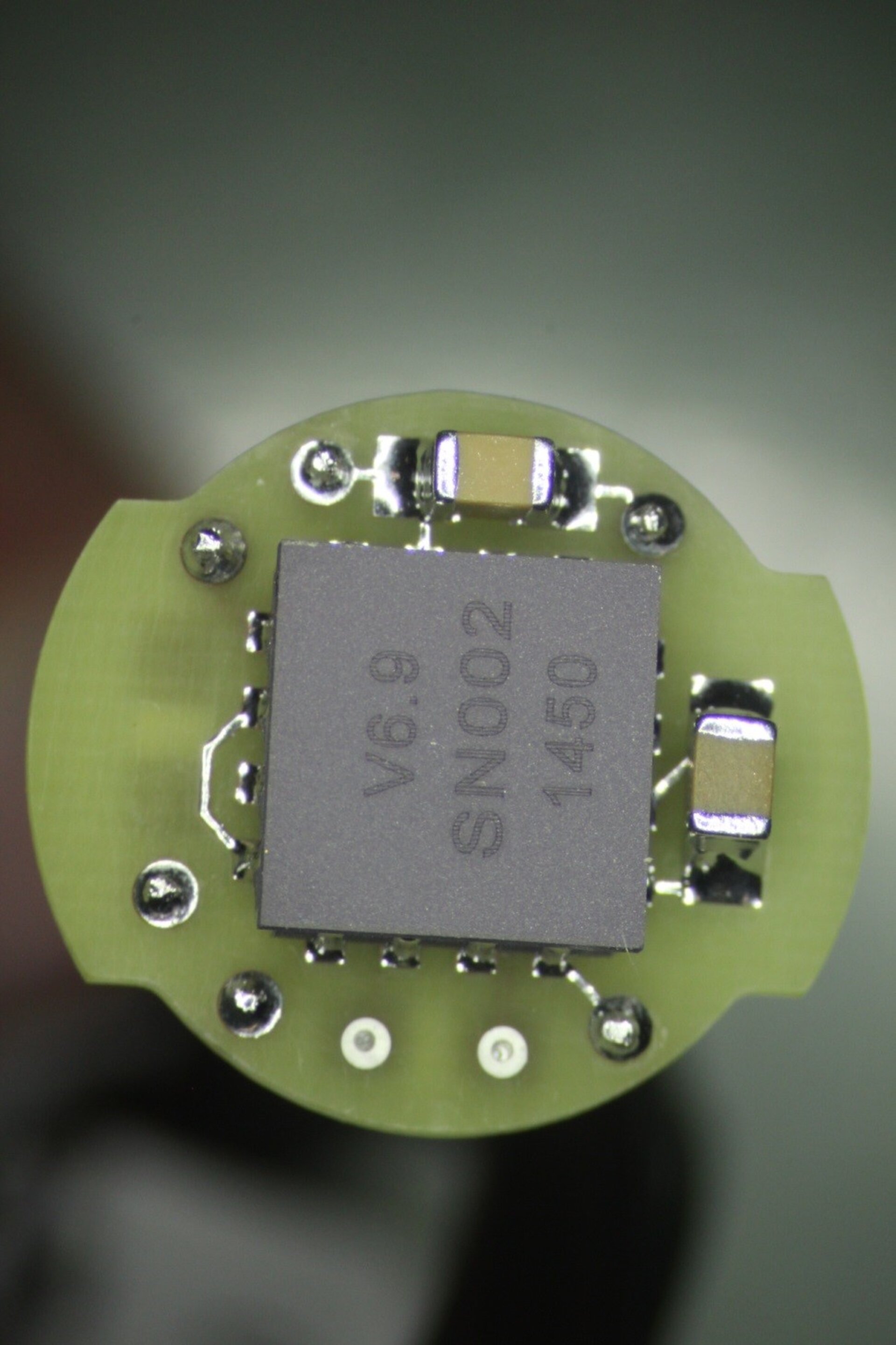Contactless Angular Position Sensor (CAPS)
| Programme: | GSTP | Achieved TRL: | 5 |
| Reference: | G627-026MS | Closure: | 2016 |
| Contractor(s): | RUAG (CH) | ||
The CAPS is a contactless magnetic rotary encoder for accurate angular measurement over a full turn of 360°. It is a system-on-chip, combining integrated Hall elements, analog front end and digital signal processing in a single device. This project covers the activities related to the pre-evaluation of the Contactless Angular Position Sensor (CAPS) for space applications.
Objectives
The activities of the project are aimed at performing a pre-evaluation of the CAPS angular sensor. In this perspective following task have been planned:
- Upgrade of the design following the results obtained in the prototyping activity performed in the previous project phase
- Manufacturing of 30 samples via multi project wafer fabrication
- Encapsulation of components in LCC16 packages with space quality standard
- Pre-evaluation tests on the encapsulated components, including Thermal tests, SEE and burn-in among others.
- Updated of the test board design to extend the temperature range of tests during the evaluation phase

The activities of this project are to be considered as part of a larger framework activity aiming at the space evaluation of the CAPS contactless angular sensor.
Achievements and status
The CAPS is a contactless magnetic rotary encoder for accurate angular measurement over a full turn of 360°. It is a system-on-chip, combining integrated hall elements, analog front end and digital signal processing in a single device. To measure the angle, only a two-pole permanent magnet, rotating over the center of the chip is required. The absolute angle measurement provides instant indication of the magnet’s angular position with a resolution of 10 bit (on the analog output). Other outputs (digital, PWM) can also be provided. Angular position sensors are requested in numerous space applications, to provide accurate monitoring/control of rotating elements. For this function in space, the two most used technologies are:
- Optical Encoders
- Potentiometers.
Optical encoders provide a good contactless solution but are rather big, very expensive and sensitive to environment.
The potentiometers, either based on plastic or wire-wound track technologies have both led to noise problem during qualifications. Failures in flight have been reported and lead to the conclusion that the electro-mechanical contact tribological behavior is not fully mastered yet. Next future space missions will be more and more challenging, and will require advance angular sensors, meant for longer life time, better accuracy, and will be used under harsher environment.
Pre-evaluation phase successfully completed. Evaluation phase on-going (ECI-4 contract).
Benefits
The main objective of the CAPS is to replace the traditional potentiometer used within space mechanism. Often the actual potentiometers are not robust enough and users find problems during integration at system level. The CAPS technology will bring to potential future users the following main advantages:
- Low volume (thanks to the IC technology the CAPS can be considered as a miniaturized sensor)
- Low Mass, thanks to the small volume the CAPS will not weight more than 10g (without magnets; magnets weight ~20g)
- Very long life time, thanks to the contactless technology the life time of the CAPS is almost unlimited
- No deadzone around zero angular value.
- Easy to assembly within a an existing slipring allows the customer to have a single point of contact and reduced integration costs
Cost attractive, since it will be similar to the prices of a potentiometer.
Next steps
Component evaluation through ECI-4 (2017) and verification tests at system level inside a mechanism (Artes, 2017-2018), which targets a EM with qualification levels.















 Germany
Germany
 Austria
Austria
 Belgium
Belgium
 Denmark
Denmark
 Spain
Spain
 Estonia
Estonia
 Finland
Finland
 France
France
 Greece
Greece
 Hungary
Hungary
 Ireland
Ireland
 Italy
Italy
 Luxembourg
Luxembourg
 Norway
Norway
 The Netherlands
The Netherlands
 Poland
Poland
 Portugal
Portugal
 Czechia
Czechia
 Romania
Romania
 United Kingdom
United Kingdom
 Slovenia
Slovenia
 Sweden
Sweden
 Switzerland
Switzerland


























